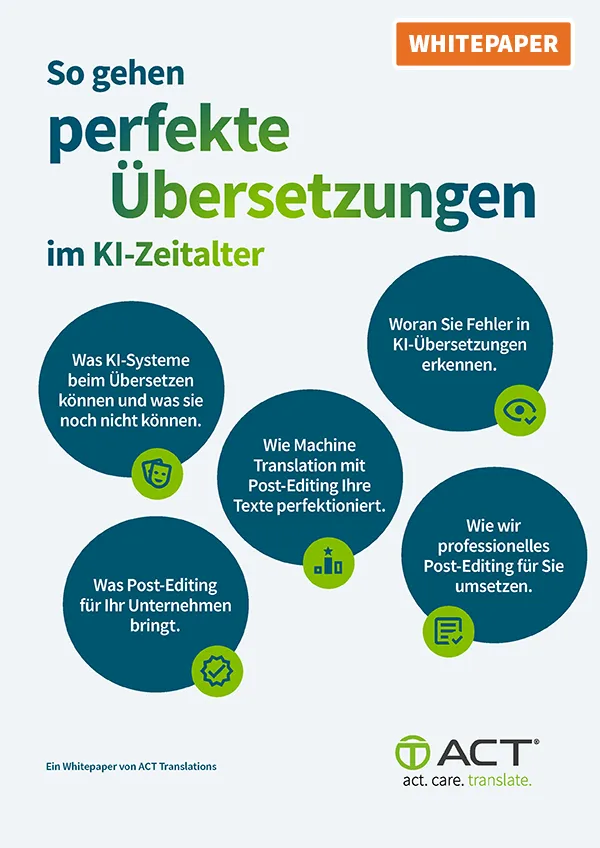Anyone looking to build a multilingual website with WordPress will need suitable plugins. A whole range of these are now available and some of them achieve remarkable results. Read on to discover which of these translation plugins are the most popular and why working with human translators is still the best option.
They are quick, numerous, and astonishingly good at translating a WordPress website into multiple languages. Translation plugins for WordPress, the world’s most popular content management-system, are ideal for meeting the basic requirement for usable website translations. Plugins such as WPML offer outstanding solutions for this purpose. Although WordPress is available in several language versions, they cannot be used to create multilingual websites nor do they feature an integrated translation capability. This means that you need suitable plugins.
The choice is wide: some plugins offer the possibility of manually uploading content in different languages to the website. The automatic translation plugins use online translation services such as Google Translate, Microsoft Translator or DeepL, which are easier to use but generally deliver less convincing results. The price range is also relatively wide, which allows developers to select a suitable plugin based on their budget.
Manual or automatic: the choice of translation plugins is large
Given the breadth of possibilities, it’s difficult for us to offer definitive recommendations or compile a ranking of the five best plugins. The individual requirements in terms of performance scope, usability or costs are simply too different. It certainly makes sense to try out different plugins as even the paid plugins provide trial versions free of charge.
We took a closer look at five of the best translation plugins for WordPress.
WPML – the most popular plugin
WordPress Multi Lingual Plugin, WPML, is the undisputed leader when it comes to automated machine translation in WordPress websites. So far, it is said to have translated more than a million websites, into 65 different languages. But what does WPML offer? It is considered to be particularly user-friendly as well as simple for non-tech-savvy users to install and configure. What’s more, it is highly compatible with most themes and plugins in WordPress. Another plus point: WPML offers integration with WooCommerce, which means it also supports the translation of WordPress online shops into multiple languages.
WPML owes its popularity to the numerous subscription variants, among other things. This allows users to tailor the plugin very precisely to their required service level. And it has a lot to offer, especially if you want to look at setting up translations directly in the editor. WPML can be used for both manual and automatic translations into 65 languages. You can also request your preferred translation service provider to check the results.
In “Translate Some” mode, the plugin converts selected content items on the WordPress website. The “Translate Everything” mode takes care of all texts, which of course saves time. However, the automatic translations can quickly become expensive due to the credit system used.
Weglot – multilingual for small projects
Weglot is one of the most popular and widely used translation plugins, especially for the automatic translation of WordPress websites. This may also be because it is free for smaller websites with less than 2,000 words and for translation into just one language, making it one of the best plugins for small projects.
The cloud-based WordPress plugin is also available for e-commerce platforms such as Shopify or BigCommerce. It has access to a database containing more than 100 languages. Similar to WPML, Weglot also lets you integrate professional translators.
First and foremost, users appreciate Weglot for its high speed. It is one of the best plugins for multilingual websites. This applies both to the setup process and the translation itself, which is completed in a matter of minutes. However, the output requires post-editing in many cases. Its compatibility with themes and plugins in WordPress is also highly valued.
Google Website Translator – based on GTranslate
The automatic translation plugin uses the online API from Google Translate to translate websites. GTranslate is considered to be extremely user-friendly: the plugin generates a sidebar widget that displays all language versions on the website. It offers WPML-integrated options that make setup even simpler. Visitors simply have to select which of the unlimited numbers of languages they wish to display. This can easily be configured using the dashboard. At the same time, the plugin uses cookies to detect the country from which access is made. The translation work does not impact the loading time of the website itself.
The free version is available for a two-week trial period, but its functionality for translating WordPress is severely restricted. After that, there are graduated subscription prices with more functions that allow flexible use and setup of the plugins.
Polylang – popular for manual translation
Very widely used, highly praised: the basic version of the Polylang translation plugin is free and cooperates with the Lingotek Translation plugin, which is also free. Polylang offers the translation of all website elements from the single pages to widgets or tags – but does not translate themes or other plugins in WordPress. This requires the use of external add-ons.
The plugin scores highly with its extremely beginner-friendly usability. Here too, an additional widget is added for visitors to the website, allowing them to switch between translated versions using the language switcher. However, Polylang does not offer automatic translation.
TranslatePress – multiple languages in real time
TranslatePress offers automatic and manual translation into more than 220 languages in real time. This plugin is also much admired for its intuitive usability without the need for prior knowledge.
TranslatePress offers integration with the Google Translate API, which significantly speeds up automated translation. The plugin is also a GPL (General Public License), which means that you retain ownership of the translated texts and can make them available quickly. You can place the language switcher anywhere on the website, and since the plugin recognizes the user’s language, it automatically displays the appropriate language.
The free version is also ideal for beginners, although its functionality is restricted. As with most WordPress plugins, you need the paid version to access SEO support, for example.
Another option: Loco Translate – the tool for developers
This plugin, which also offers a free basic version, enables the translation of WordPress themes and plugins – setting it apart from others mentioned above. Loco Translate is primarily used by developers and has more than one million active installations in the WordPress repository.
Why automatic translation does not replace human professionals
So far, we have learned that manual plugins combine human translation work with increasingly detailed and user-friendly CMS functionalities for WordPress websites. In principle, automatic plugins can completely replace the former. But do they in reality?
The answer is probably that it depends on the requirements. For simple and short texts whose translation is based on solutions such as DeepL, automatic translation is perfectly adequate. However, these simple translation approaches very quickly reach their limits when applied to structured, complicated or subject-specific texts. At best, they simply produce poor texts and, at worst, they can harm the company. Developers must ensure that the texts are correct and not classified as spam.
This is not about competition between humans and plugins. Developers must make the best use of both resources. Good translation service providers have long since been offering post-editing, that is, professional reworking of machine-generated translations. This results in lower costs for clients, who can then provide a basic framework for the translators to work on.
What can humans do better than automated WordPress plugins?
Professional translators enhance the machine-generated texts on WordPress websites by adding everything that the plugins themselves are unable to provide. There are several reasons why humans are required for translating languages.
Linguistic excellence: despite all the admiration that the performance of artificial intelligence attracts – a website that is automatically translated can never match the stylistic abilities of human professionals. Only they can translate mediocre texts into polished language.
Localization: only humans have a feel for local aspects of language such as idioms, a grasp of humor, sensitive or taboo subjects. Good translations take these aspects into account.
Specialist expertise: here too, a professional translation service is the right choice. Professional plugins tend to use literal translations of technical terms, which can be correctly incorrect in context.
Legal aspects: in this area in particular, machine translations should always be post-edited. For instance, anyone who relies on an automatic translation of their general terms and conditions of business can be pretty sure that the translation will not fulfil legal requirements. Dealing with legal issues is a key factor in the quality of a translation.




